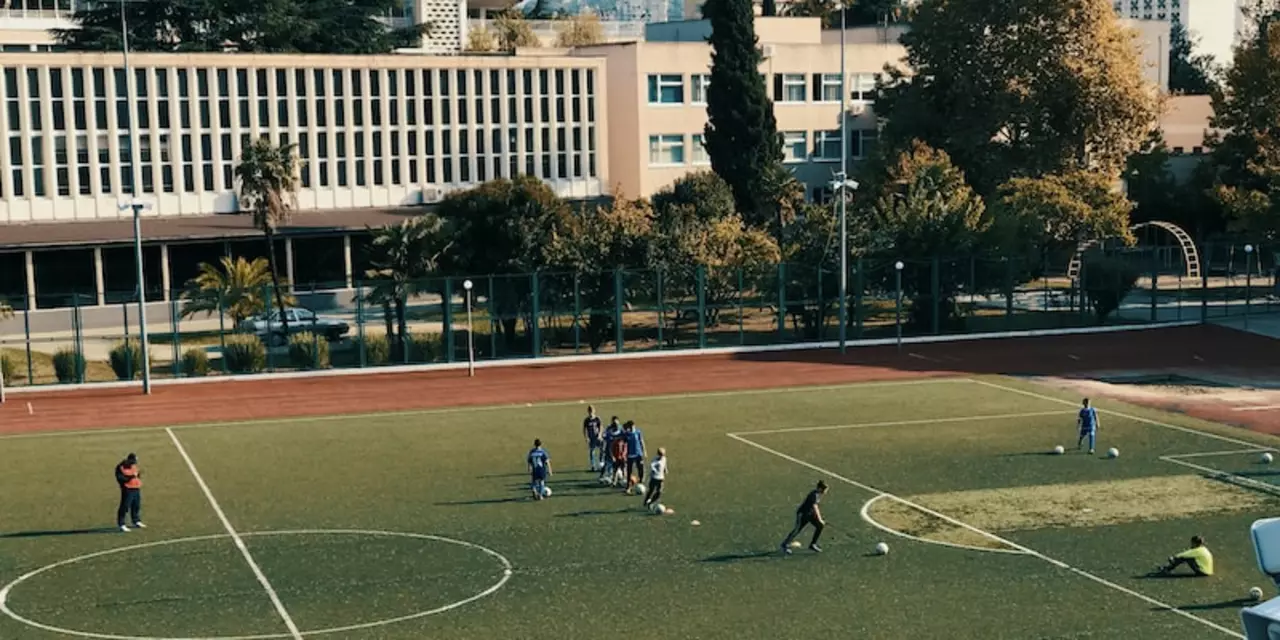Exercise Tips to Elevate Your Soccer Performance
Want to run farther, cut sharper, and kick harder without spending hours in a gym? The right exercises can make a real difference on the pitch, and you don’t need fancy equipment. Below are simple drills you can fit into any schedule, whether you’re training with a team or practicing solo.
Core Drills for Speed and Agility
Speed starts with quick feet and a strong core. Try the ladder drill: lay down a rope or use chalk to mark nine squares, then run through them side‑to‑side, forward‑backward, and in an ‘in‑and‑out’ pattern. Do three sets, resting 30 seconds between each. You’ll feel your coordination improve fast.
Another great move is the cone shuffle. Set up four cones in a square, about five meters apart. Sprint to the first cone, shuffle laterally to the next, backpedal to the third, and finish with a quick turn to the start. This mimics the change‑of‑direction moments you face in a game and builds explosive power.
Finish the speed circuit with high‑knee runs: run in place, driving knees up to waist level, for 20 seconds. Keep your arms pumping, and focus on landing softly on the balls of your feet. It boosts ankle stability and helps you stay light on the field.
Strength Workouts You Can Do Anywhere
Strength isn’t just about lifting heavy weights. Bodyweight moves like squats, lunges, and push‑ups create functional power that translates straight to better ball control and shooting.
Start with three sets of 12‑15 bodyweight squats. Keep your chest up, push your hips back, and pause a second at the bottom. Add a jump at the end of each rep for extra plyometric benefit.
Lunges work each leg individually, fixing imbalances that often cause injuries. Step forward, drop the back knee toward the ground, then push back to standing. Switch legs and repeat for 10 reps per side.
Don’t forget your core. Plank variations—standard, side, and reverse—hold for 45 seconds each. A strong core protects your lower back during tackles and improves balance when you strike the ball.
If you have a resistance band, loop it around your ankles for banded side walks. Take small steps sideways for 20 meters, then reverse direction. This targets the hip abductors that keep you steady when you cut across the field.
All these exercises can be done in 30‑45 minutes, three times a week. Consistency beats intensity when you’re balancing training, school, or work.
Remember to warm up with light jogging and dynamic stretches—leg swings, arm circles, and ankle rolls—before you jump into the drills. Cool down with static stretches to keep flexibility high and soreness low.
Implement these moves into your routine, track your progress, and you’ll notice quicker sprints, stronger tackles, and a sharper mind on the ball. The key is to stay consistent, listen to your body, and enjoy the process. Your next match will thank you.
What is a soccer player's lifestyle?
A soccer player's lifestyle involves a lot of hard work and dedication. They must put in hours of practice each day to stay fit and develop their skills. Soccer players must follow a strict diet and fitness routine to keep their bodies in top condition. They must also be aware of their emotional wellbeing, taking part in activities that help them relax and focus. Soccer is a team sport, and players must be able to work well with their peers and coaches to be successful. Finally, soccer players must be able to handle the pressure of competition and the expectations of fans.
Kieran Donovan | Mar, 3 2023 Read More
